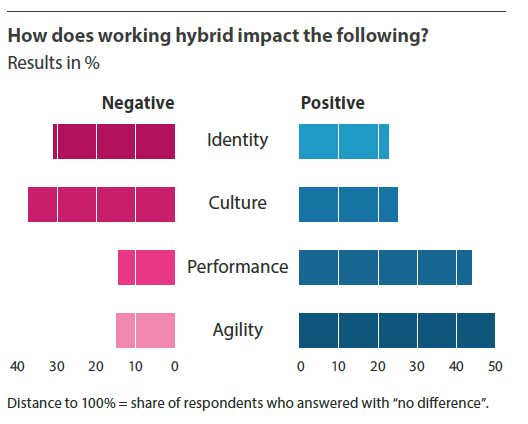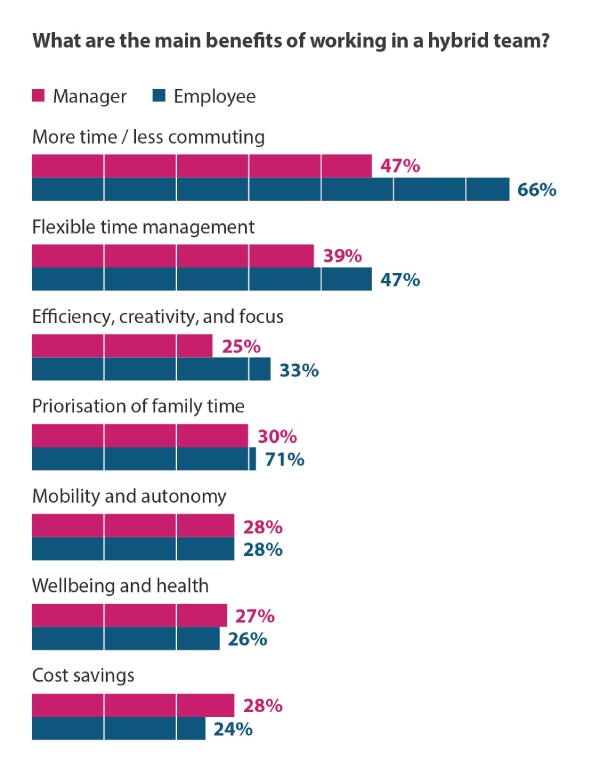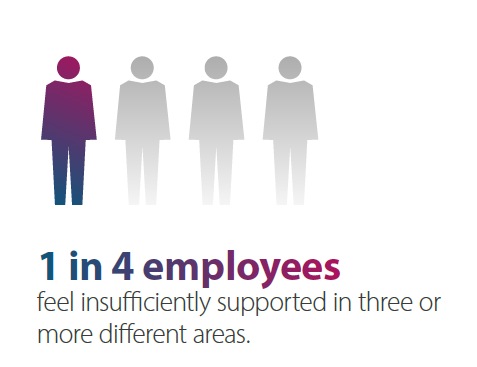As we got used to slower mornings, working in our comfiest clothes and walking the dog on breaks, it’d be easy to assume that remote work would be the future for most employees in this new era..
But the research shows a different picture.
One where the hybrid working model reigns, and the future of our organisations depends on making it a success for managers and their teams.
As hybrid continues to grow traction, we asked ourselves the question: is the hybrid model really working?
Instead of looking to organisations and the c-suite to answer this question, we headed straight to the epicentre of this movement in working practices…the people!
We surveyed 1,750 team members and managers around the world to ask how employees feel the hybrid model is working? What benefits and challenges are they experiencing? And what do they feel organisations will need to focus on to make hybrid working a true success for everyone involved?
You can download the full Global Hybrid Working Report here or read on to learn more about what we discovered…
The verdict? Hybrid is here to stay
It’s official, hybrid working is the new normal. The resounding message throughout the data is that hybrid working models are, in fact, here to stay.
With 70% of employees wanting to stick with this flexible setup for the long haul and 65% of companies planning to maintain their hybrid structure permanently, it’s clear this way of working is, well, working.
Organisations appear to have struck the balance right in terms of listening to employees’ preferences and offering the right amount of flexibility, with 60% of teams already working in the hybrid model they favour the most.
Of the team members who were not happy with their current work options, only 10% preferred the traditional office-first model. Most people would rather switch to a happy medium of working from home and occasionally visiting the office.
It’s clear that hybrid working isn’t going anywhere, and organisations are going to have to offer more than just a balanced working structure to unleash the full potential of their hybrid teams.
Employee performance and efficiency is strong in the hybrid working model
Hybrid working is all about combining physical and digital spaces. The marrying together of these two work options allows us/managers/one to handpick the best characteristics from each and create a union of employee and organisational bliss.
But is this the reality? Or are we looking at the hybrid working model through rose tinted glasses?
The benefits are definitely there. As well as the expected advantages of less travel, better work life balance, and being able to work more flexibly; employees found one of the key benefits was the agility and performance of their teams.

This might be because teams are using the right spaces for specific types of working, for example the office for collaborating and the home for focused tasks. Team efficiency, delivering on objectives, and even improving learning and development, are all areas where employees experienced positive change since working in a hybrid model.
But while there are areas that have undoubtedly thrived, hybrid working structures also carry clear challenges for teams and managers.
Building relationships and team connections suffer in hybrid environments
In the traditional office setting, you had the opportunity to talk with your colleagues over lunch, pop over to someone’s desk to ask a question, or even congregate around the coffee machine and have a casual conversation while you waited for your drink.
It was full of little moments for connection that we barely even noticed.
Now with team members spread across working in an office space as well as remote, it is no wonder that ‘a lack of social connection and casual conversations’ is one of the biggest challenges we face within a hybrid working model.
Almost 50% of employees say that building relationships is more difficult due to the ‘hybridisation’ of their team
The lack of face-to-face communication or time dedicated specifically to building connections with team members could be what has made this the most negatively impacted area for hybrid teams. The problem is that, left untreated, this can have a long term negative effect on team performance and company culture.
We did find that 64% of employees are using communication tools as a way of overcoming these challenges, but this will only go so far. There needs to be a stronger focus on supporting people to build better relationships and have time to create those important connections with their team members.

More must be done to make the hybrid work model a true success
The hybrid work model was touted as the future, but we are here now.
Organisations can no longer afford to guess what should be done to support their hybrid teams in order to make this a true success. They will have to take action now, putting in place the right strategies, development plans and initiatives to retain staff and increase team performance at the same time.
Our survey reveals that only 21% of companies have implemented specific development plans including upskilling for hybrid environments
The focus so far for organisations has likely been the implementation of communication tools and processes. When it comes down to it, though, what really makes or breaks a hybrid workflow is how well your employees work together.
To make the most of this hybrid model, more needs to be done.

Organisations must invest in upskilling their hybrid teams in areas including effective communication and collaboration as well as providing more opportunities for building connections.
It doesn’t matter how innovative your company is if your employees aren’t able to collaborate or communicate effectively, performance will suffer. Our research shows that the most challenging areas for employees and managers centre on relationships.
The data is clear: Managers who intend to create a hybrid working model that’s the best of both worlds must focus first on supporting their people to communicate better and build stronger connections. Easier said than done? Perhaps. But it’s something to think about as you walk your dog on your next break.
Don’t miss the opportunity to stay ahead of the curve and empower your hybrid teams.


